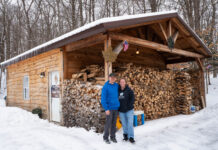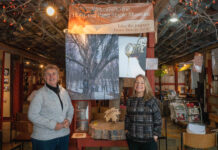(Editor’s note: The following is an excerpt from a 2012 article by John A. Darnell Jr., and reprinted with permission from the Boardman News.)
* * *
For a brief period of time, from about 1911 to 1925, Boardman Township served as home to Southern Park, a harness racing track that attracted thousands of people to the races held at the corner of Southern Boulevard and McClurg Road.
The track’s facility comprised a 55- acre track of land (bounded today by McClurg ´Road, Market Street, Washington Boulevard and Southern Boulevard).
In the late 1940s, the land was purchased from the Edward Strong Estate of Cleveland by Clarence R. Smith Jr., for a reported sum of $45,000.
Nothing remains today of the race track, but a stable house that served the track is the former land of [the late] Janie Jenkins, still exists today as it was in 1911 when it was constructed. It included stables for upwards of 16 horses, and a warm-up track in the back that surrounds a small pond.
Related: The Southern Park Stables are now available to use by the Mahoning County 4-H club.
Iron City Gentlemen
A fabled harness horseman’s magazine from the early 1900s, The Horse Review, reported in 1915 that Southern Park originated as the idea of a group of harness racing enthusiasts from Cleveland.
The group, referred to as the ‘Iron City Gentlemen,’ decided to put Youngstown “back on the harness horse map” and located their facility in Boardman Township, then described as “country, where there is sunshine, trees and an alluring pastoral environment.”
In 1914, a writer for The Harness Review visited Southern Park, beginning his article —- “Race tracks and race meetings always reflect and illustrate the character of the men who are back of them.”
And so, the men who helped to organize investors and then construct Southern Park, were Sen. David Tod, son of former Ohio Gov. David Tod; and H.H. Stambaugh, treasurer of the Briar Hill Iron and Coal Co.
They tried to construct Southern Park like the historic track in Goshen, N.Y., that is still operating today and is known as ‘the cradle of the trotter.’
Tod, Stambaugh and ‘their group,’ were described as “men of standing and influence…whom failure in any undertaking, sporting, financial or social, is not a recognized possibility.”
When it first opened, Southern Park was described as “one of the most attractive half-mile plants in America [and when] further improvements contemplated, are completed, it will be a veritable gem of a spot.”
That day in 1914 when The Horse Review sent its reporter to Southern Park, it was reported the race track “was not prepared to handle the crowds that flocked through its turnstiles.”
With parking on the infield of the race track, The Horse Review observed “The grandstand was inadequate and so many people came in autos that their passage across the track interfered somewhat with the racing.
“The meeting (horse races) not only proved a grand success from an attendance and financial standpoint, but the racing was just the sort calculated to give spectators the best possible impression of the sport.”
The track at Southern Park was described as “one of the very-best half-miles ever built. Special care was taken in planning it with the result that the turns are easily negotiated and offer no handicap to horses entering them from the stretches…It dries quickly after rains.”
Adjacent to the track was Ms. Jenkins’ home, then the stable of Atty. David Arrel, son of a prominent Mahoning County farmer in the mid 1800s.
“The stable is one of the most tasteful and best-equipped to be found anywhere, every convenience and comfort for men and horses being provided,” The Horse Review said. …
Auto racing
During is heyday, Southern Park not only was a place to run horse, but also automobiles. Early airplane pilot performed shows to huge crowds in front of the grandstand.
Accounts of Southern Park describe how “Bob Bauman, auto speed king in the early days of automobiles, drove with reckless abandon over its course to set a world-record for a half-mile dirt track.”
It is as yet, unknown, just why Southern park closed its doors to the public. All that remains today of the fabled racetrack and its surroundings are Ms. Jenkins’ property on Washington Boulevard, and Mr. Stambaugh’s barn on the property of C.R. Smith Jr.
* * *










